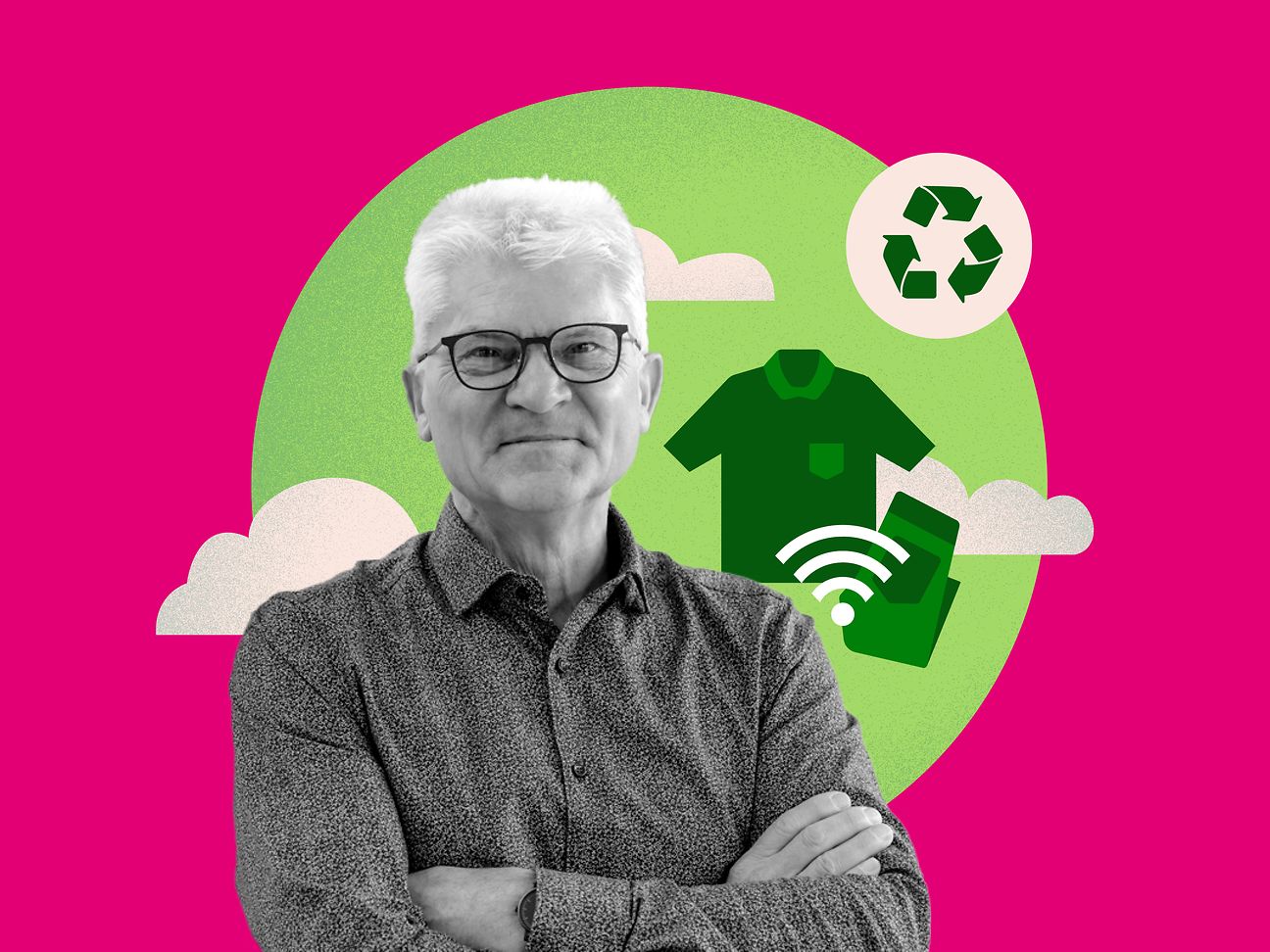Chucked in the bin
Where to dispose of old work clothes? This question also occurred to Ruediger Adam. And since he didn't find a satisfactory answer, he developed an intelligent collection container for jeans and work textiles. There are already 35 of them at our company - the goal is to equip all Telekom locations with them.
What is so difficult about recycling work clothing? Aren't there enough textile containers in public places?
Ruediger Adam: However, textiles with the Telekom logo cannot simply be thrown in. In the past, employees had to remove the logos beforehand. As a result, the clothing is considered damaged and, according to current waste regulations, is destined for the residual waste bin. Moreover, companies are legally obliged to collect used textiles separately.
And then you thought: There must be a different way to conserve natural resources?
Ruediger: Exactly. In my IoT area, I am also involved in sustainability issues and, together with a team of Green Pioneers, I thought about how to solve the problem better and how to use our digital skills for it. In recent years, we have built an ecosystem of collection, sorting, recycling, and production. Our intelligent collection containers for Telekom clothing and jeans are at the center. We are initially focusing on the material 'cotton.'
What makes the textile container so smart?
Ruediger: IoT sensors in the container send the fill level to the cloud. This way, the recycler knows when it is worth emptying them and saves unnecessary trips. This is a nice digital side effect. But above all, through recycling, we have already collected a textile mountain of 88 meters in height by 2023, saving 136 million liters of water and 315 tons of CO2.
Where does this saving effect actually come from?
Ruediger: Another cooperation partner recycles the clothing into fibers that can be reused. This is where the savings come in. Producing one kilogram of cotton requires 10,000 liters of water alone. In contrast, one kilogram of recycled cotton saves two-thirds of water consumption and 15 kilograms of CO2.
If recycling clothing with company branding is particularly complicated, couldn't your container become a business model?
Ruediger: Absolutely. In Germany alone, there are 6,000 companies whose employees wear work clothing. These textiles could be brought into an internal cycle.
Are we doing that too?
Ruediger: Yes. For example, starting in May 2024, the first sustainable jeans containing fibers from the Telekom collection will be available for purchase in the LoveMagenta Shop. In technical jargon, this is called 'Post Consumer Recycled Denim.' Tim Höttges will also receive one for the launch. And who knows: perhaps parts of his old pants are in there? After all, he has already diligently fed the container at the headquarters in Bonn.


